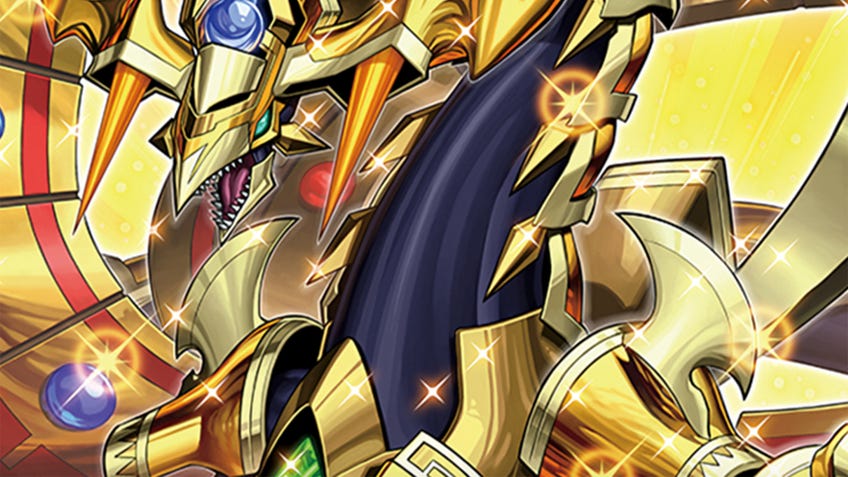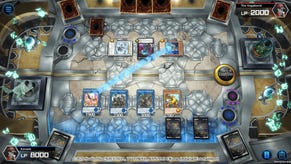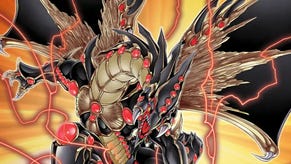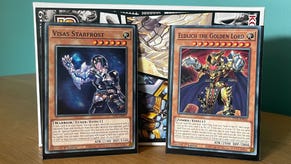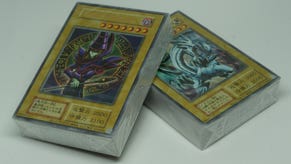Yu-Gi-Oh!’s new Dimension Force set and latest bans are turning the TCG’s competitive scene upside-down
Recent releases and the return of powerful classics have made the meta less predictable than ever.
Dimension Force is officially out, and with Nationals season fast approaching, the game of Yu-Gi-Oh! is set for a major transformation just weeks ahead of this crucial moment in the TCG’s competitive calendar. Not only is the latest set bringing new archetypes with potential to impact the competitive scene ahead of regional and national events, a new Yu-Gi-Oh! ban list inflicts some pretty major changes while bringing back some legendary cards from the earliest days of the card game to spice things up further.
From a format defined by the absurdity of the combos and potential offered by Prank-Kids and particularly their Link-summoned Meow-Meow-Mu, the release of this new set and the cards newly-banned and brought back from obscurity have already altered how the game is played, opening up the potential for more decks to compete for the top spots at major upcoming tournaments. And let’s be real here: more variety in the number of decks that are competitively viable is never a bad thing.
Before jumping into a discussion of the newly-released Dimension Force, however, we need to address the elephant of a ban list in the room. While not as transformative as some of the more legendary lists from years past - who could forget the split between the OCG and TCG in late 2013 that saw a whopping 47 cards hit in the dominant Spellbook-Dragon Ruler format? - this is an intense list hitting over 20 cards, impacting almost every major deck while bringing back some blasts from the past.
The aforementioned Prank-Kids dominance over the past year made a ban of the deck’s most crucial Link monster in Meow-Meow-Mu an inevitability. The ability to summon a Prank-Kid such as Lampsies, use it as material for this Link-1 monster, before bringing out another Prank-Kid monster to the field from Lampsies effect and using this to go into your boss monsters turned the deck into a one-card combo able to overcome any obstacle.
Similar cards allowed for unchecked power plays, such as Predaplant Verte Anacondo and its ability to massively strengthen Fusion summon decks like Branded Despia for easy access to Branded Fusion. Not just its power but the ease at which this card could be brought onto the field made it too strong for the current format and gave an unfair advantage to those decks that utilised it.
More variety in the number of decks that are competitively viable is never a bad thing.
Perhaps the biggest surprise with this list is the chance for newer players to utilise one of the most overpowered older cards in Yu-Gi-Oh! as it returns after over a decade on the ban list. Change of Heart’s return is a surprising one, particularly with the card possessing less drawbacks than another Limited card from the classic era, Mind Control. The threat of an opponent taking control of your boss monster and attacking you for the win is something all decks will need to consider going forwards, even if the card ends up being used merely as a Side Deck tech choice.
The fact that this card and Yata-Garasu - a key part of the legendary Yata-Lock that led to the card's initial entry onto the ban list - can be given a second chance in the current meta just shows how much the game has evolved over the past 20 years.
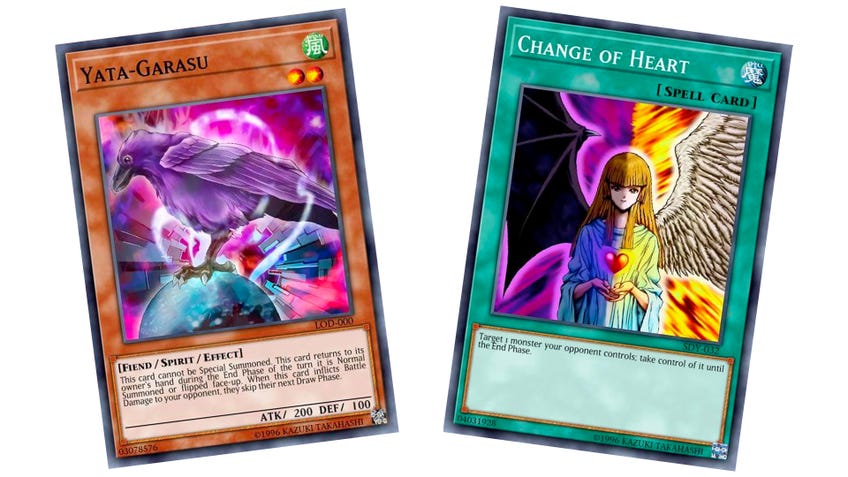
With all of these changes and more, Yu-Gi-Oh!’s metagame has shifted significantly into the hands of some of the powerful new decks offered in Dimension Force while pushing a few key archetypes to greater heights. It would be difficult not to cast an eye towards those running Pendulum Magicians with recent events in mind. Here, the ban list brought back Performapal Monkeyboard at a time when the deck has received a significant boost with the release of a new Link monster in Beyond the Pendulum.
For those unaware, Beyond the Pendulum’s effect reads: “If this card is Link Summoned in the Extra Monster Zone: You can pay 1200 LP; add 1 Pendulum Monster from your Deck to your hand, but for the rest of this turn, unless you Pendulum Summon after this effect resolves, you cannot activate monster effects, and the effects of any cards in your Pendulum Zones are negated. If 2 monsters with different original Levels are Pendulum Summoned at the same time to the zones this card points to: You can target 2 cards on the field; destroy them.”
Yu-Gi-Oh!’s metagame has shifted significantly into the hands of some of the powerful new decks offered in Dimension Force while pushing a few key archetypes to greater heights.
Even with a once-per-turn restriction, this is an incredible addition to the Pendulum deck, allowing players to search for Pendulum monsters at minimal costs while providing them with multi-card removal. The limitation on monster and Pendulum Zone effects being negated for the remainder of the term after using this effect is easily circumvented by completing a Pendulum Scale and summoning through it. Better still, once this summon has been completed, you can easily Link summon using Beyond the Pendulum into an even more powerful monster to prevent leaving yourself vulnerable with a 1200 attack monster on the field.
It’s not even the only Pendulum support in this set. Odd-Eyes Pendulumgraph Dragon is a fearsome Ritual Pendulum monster who can not only inflict burn damage when your opponent Special summons from the Extra Deck, but can also be placed into the Pendulum Zone to negate an effect then, if previously Ritual summoned, can allow players to Special summon any Odd-Eyes monster from the Extra Deck. Suddenly, those running Odd-Eyes have a remarkably-simple method of bringing out incredible Extra Deck cards like Odd-Eyes Vortex Dragon or Odd-Eyes Meteorburst Dragon with ease.
The most hyped-up new archetype coming out of Dimension Force is undoubtedly Therions. Introduced in this set, the Therion engine revolves around these monsters Special summoning themselves to the field by equipping other Therion monsters from your graveyard, sharing their effects with one another. Even at this early stage the deck has a lot to offer, possessing a searcher capable of seeking out Therion spell and trap cards in Therion ‘Lily’ Borea and a monster that can negate effects in Therion ‘King’ Regulus.
Therion Charge and Therion Discolosseum are both spell cards offering consistency and strength to overcome any weaknesses stemming from the deck’s reliance on the graveyard. Charge can send a Therion card from the field or hand to the graveyard to draw two cards, while Discolosseum is a field spell promising to allow you to send a Therion Card or Endless Engine Argyro System from the deck to the graveyard if a Therion would be destroyed by battle. If a monster ends up being destroyed and sent to the grave, you can target one Therion monster and add it to the hand. This is before talking about Argyro System’s ability to send cards to the graveyard and cycle cards between fields of play, or Therion Cross’ ability as a trap card to negate and/or banish an opponent’s monster effect.
Almost immediately after the deck’s release, players have been able to top regional events in the US and UK using the deck, adapting the deck to run in support with other archetypes. Some players have opted for a Plant variant to address concerns over consistency, taking advantage of Lily being a Plant monster to run it in Plant decks that can help bring it and other Therion cards to the field more easily. Others have taken advantage of another new Dimension Force card in Noh-P.U.N.K. Deer Note to synergise these two engines together into a single deck with access to high-level Synchro and Xyz monsters like Baronne de Fleur.
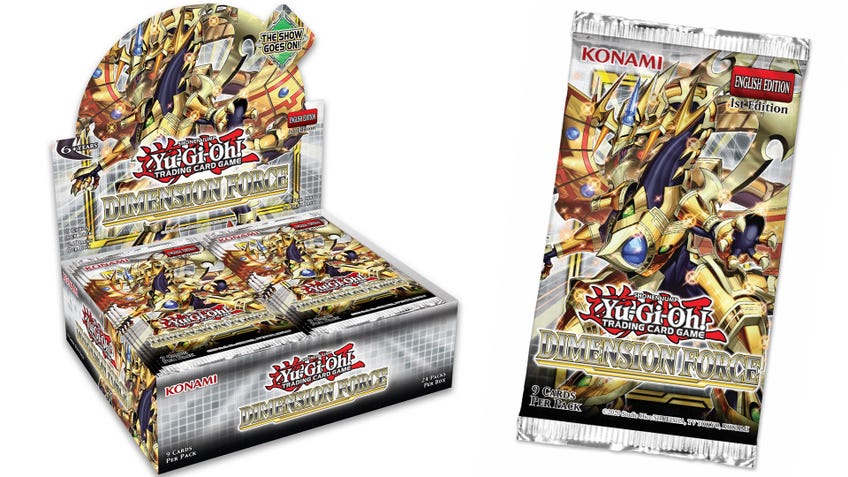
Elsewhere in the set, Dinomorphia have been strengthened by a new Fusion boss monster, Dinomorphia Rexturn. The deck relies on bringing your life points as low as possible before taking advantage of your own low life points or the gulf between your life points and your opponent. Rexturn can negate the effects of monsters with more attack than your current life points and reduce their attack to the equivalent of your life points, which with this deck is typically hovering on the edge of nothing. Those worried by the need to use a Dinomorphia Fusion monster as material are assisted by Dinomorphia Frenzy, a trap that can instantly Fusion summon using a Main Deck and Extra Deck Fusion monster as material.
With Libromancers and Albaz decks also receiving support, rarely has the meta been more in flux heading into the most competitive period of the year for Yu-Gi-Oh! as this. Then again, rarely does the competitive scene have to face both a new set and ban list in the same week, immediately before major qualification tournaments. Those decks less affected by the ban list, such as Branded Despia and Swordsoul Tenyi, will likely continue to perform after performing well alongside Therions at recent US regional events, with some success greeting Salamangreats - newly revitalised as Miragestallio and Circle are removed from the Limited and Semi-Limited lists.
One thing is for certain: as the race heats up to discover the best Yu-Gi-Oh! player in each region around the world, the name of the deck that propels that player to victory is less certain than ever. And the game is healthier for that.
